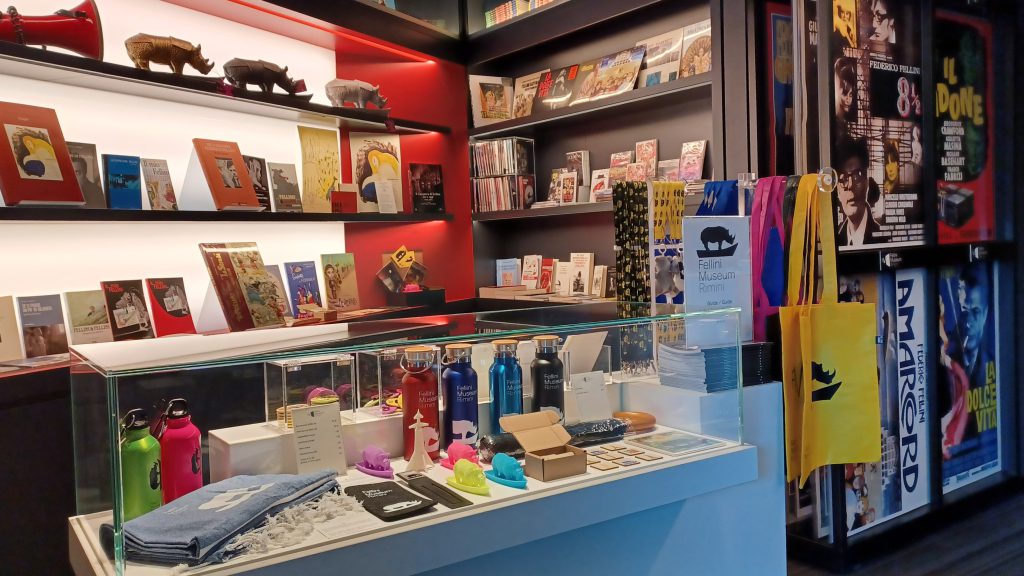Fellini Museum
Inserted by the Ministry of Culture among the National Heritage Great National Projects, the Museum spans between Sismondo Castle, Fulgor Palace and Malatesta Square.
Designed by Professor Orazio Carpenzano, with artistic and multimedia design by Studio Azzurro, advised by Marco Bertozzi and Anna Villari, it is part of the cultural pole that includes the Teatro Galli, Palazzi dell’Arte Rimini with the Sculpture Garden, the Fulgor Cinema, the Civic Museum, the Surgeons’ Domus, the Gambalunga Library, the Tiberius Bridge with the Water Square and Porta Galliana, the Arena Francesca da Rimini, the Arch of Augustus, the Malatesta Temple and Porta Montanara.
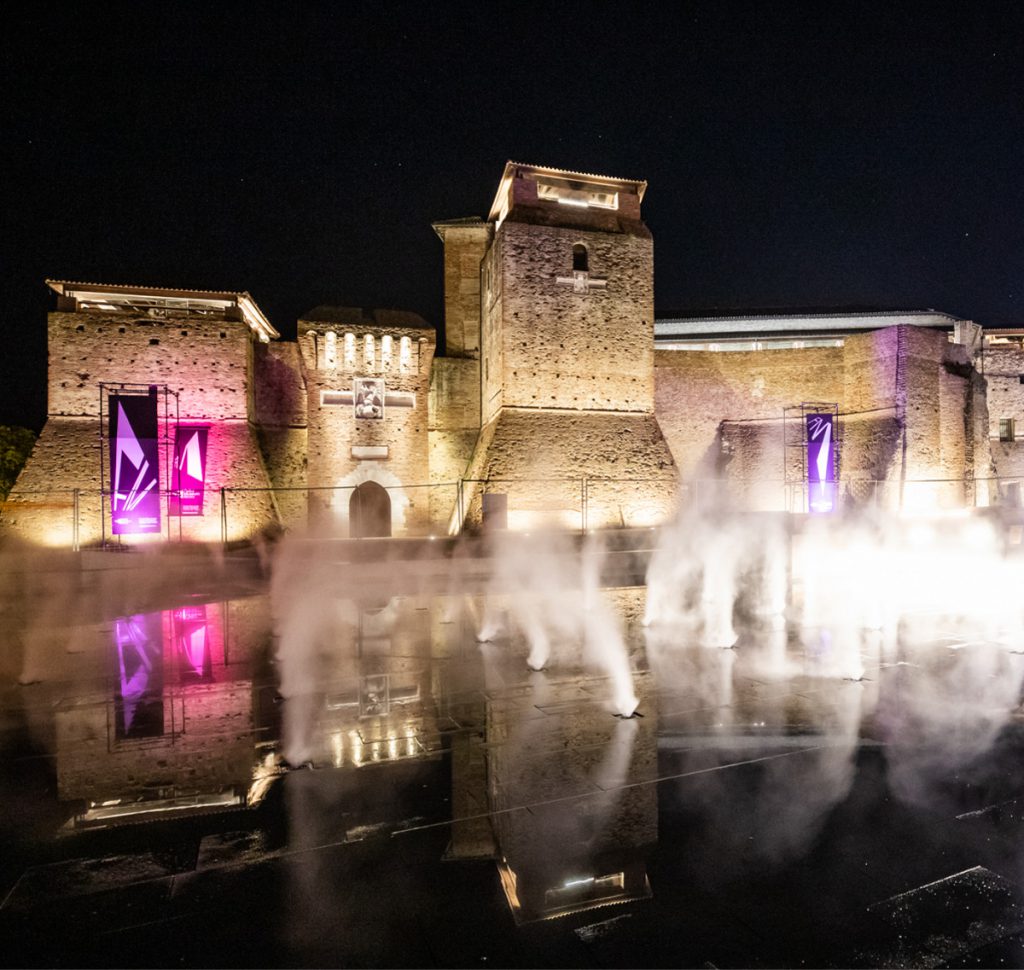
Sismondo Castle
Sismondo Castle hosts the most emotional part of the Fellini Museum. The rooms of the ancient Malatestian Fortress host installations that can trigger a deep immersion into Federico Fellini’s philosophy and world. Sensitive locations, conceived with the full awareness of the enormous value of the Castle, create a “narrative museum” which allows to celebrate the director’s visionarity through spectacular scene machines. Here Fellini’s cinema is shown beyond its documentary sources. In a sort of diffused marvel, “machines à imaginaire” introducing the visitor to original cognitive paths follow one another: from the Confessionals of professions to the Hall of swings, from the Dreaming giantess to the Fantastic advertisements, among the evocations of The Fellinian Library and the Book of Dreams… Visitors have a unique experience, in a museum which not (only) aims at answering questions but, above all, at provoking them.
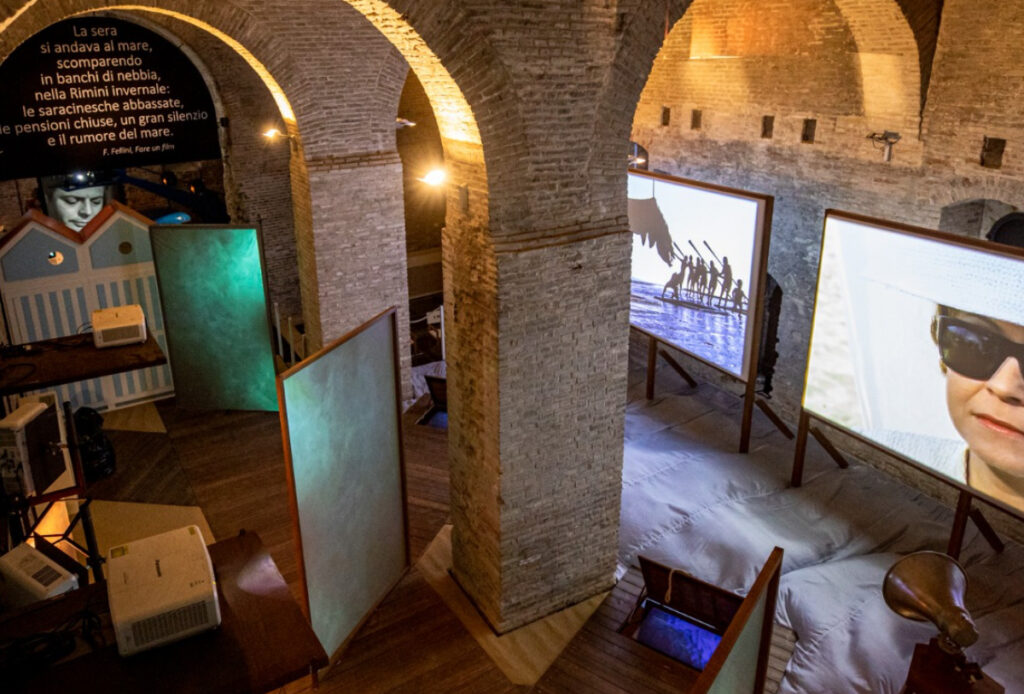
Malatesta Square
In front of Sismondo Castle a mist, evoking the passage of the transatlantic Rex in the film Amarcord, rises from a veil of water along the perimeter of the ancient moat. TheWood of Names, conceived by the poet Tonino Guerra, is a set of stone flowers engraved with the names of great film personalities who were friends of Guerra: Federico Fellini, Giulietta Masina, Marcello Mastroianni, Michelangelo Antonioni, Andrej Tarkovskij, Theo Angelopoulos and Sergej Paradjanov. These flowers are lit by three large wrought-iron lanterns that Guerra dedicated to the Russian writer Lev Tolstoy. The forest is set in a green triangle reminiscent of the rural scenes in the film Amarcord and marks the symbolic point where the first countryside touches the historic city.
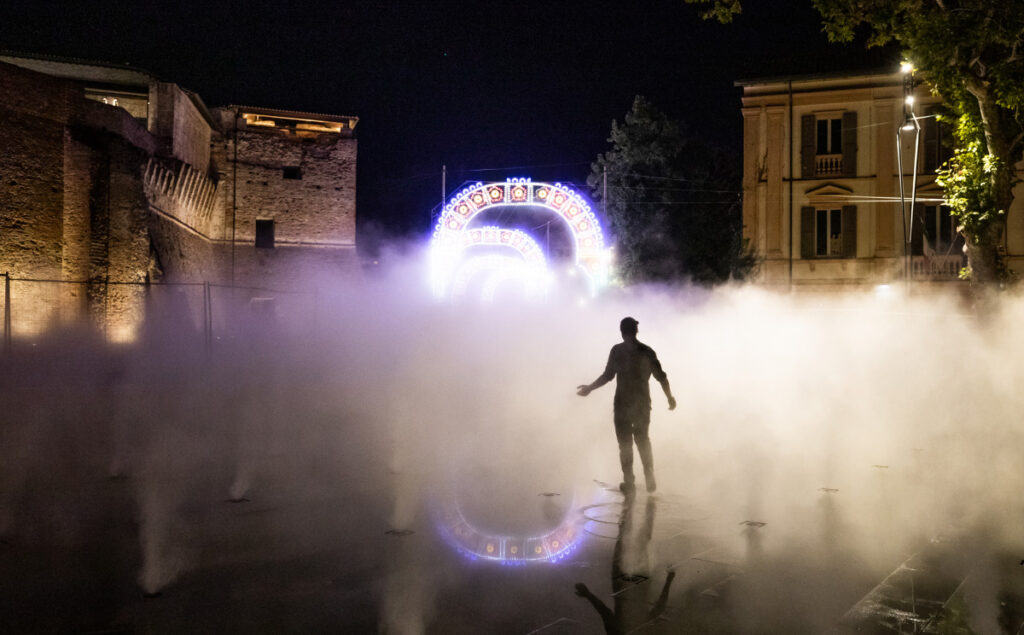
Fulgor Palace
A large ledwall indicates access to the Fulgor Palace, an eighteenth-century three-story building where the inside has been transformed into a spacious monochromatic space, which encourages the perception of verticality and the capability of looking at different rooms at the same time. Through a series of visual, technological and interactive tools, it will be possible to undertake a spectacular journey through Fellini’s imagery. Permanent installations and environments, such as the Room of Words, the Cinemino and the House of the Magician, are flanked by spaces and areas destined to host temporary exhibitions, such as Room 30 on the first floor, the galleries on the second and third floors, and the Hall of Architecture on the second floor.

The rinocentessa (female rhino) is a reminder of the ending of the film “E la nave va” and is one of the many animals in Fellini’s films, herald of an elsewhere place that evokes deep and unconscious parts of the human nature. The sculpture, created for the film by Valeriano Trubbiani, is made by Studio Forme of Rome. Corso d’Augusto leads to the Cinema Fulgor, where Fellini saw his first films. The cinema, reopened with set designs by Dante Ferretti, has an independent programme in relation to the activities of the FM – Fellini Museum.
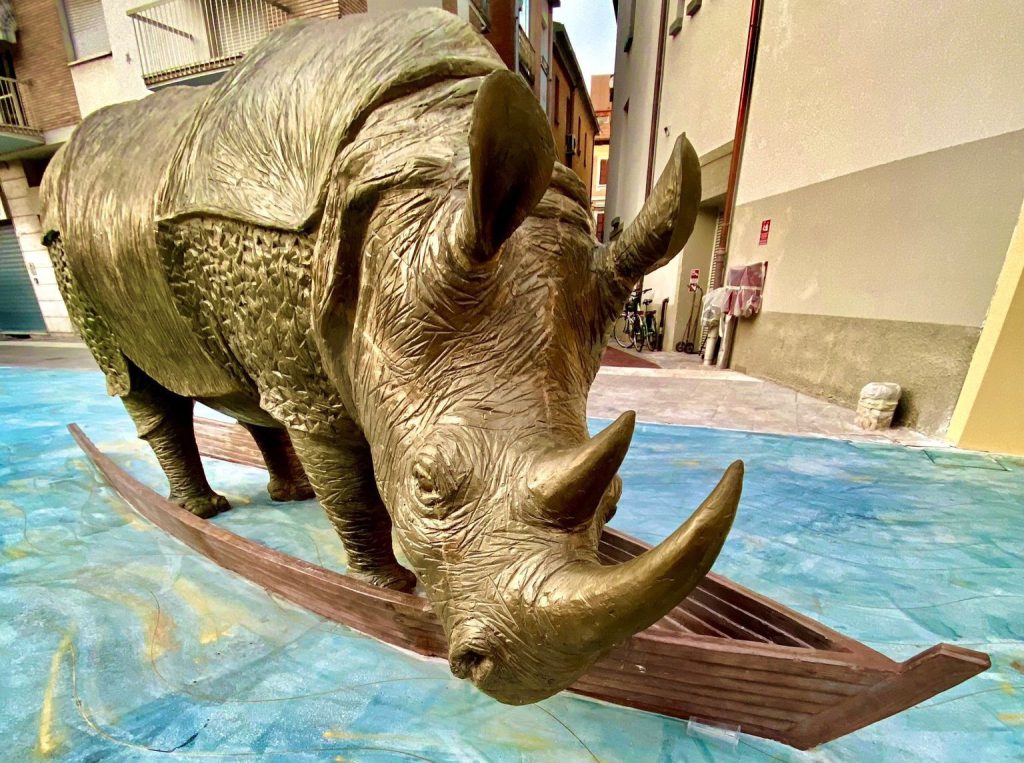
Bookshop
On the ground floor of the Fellini Museum there is a bookshop, accessible to all and open during museum hours. Here you can find a precious selection of publications on Federico Fellini, the entire filmography on DVD or Blu-ray. An unmissable place for those who want access to unique material that is difficult to find elsewhere. You can also discover a variety of unique gadgets (such as posters, shoppers, notebooks, pencil cases, pins, t-shirts and much more) branded with the Museum’s logo.
